Related Tags
How to play chords like Paul Simon
With a long career involving unpredictable twists, turns and collaborations Paul Simon is one of the most successful songwriters of the last 60 years. We take a look at the chord shapes and sequences which define his sound.

Image: Chris Walter / WireImage / Getty Images
After the acoustic version of Sound of Silence failed to kick-start his career in the USA, Paul Simon moved to London in 1965 to find the folk boom of the mid-60s in full swing. The release of the fleshed-out electric version led to his breakthrough in the USA, a 14-year collaboration with childhood friend Art Garfunkel, and his subsequent solo career. Always eclectic, he soon left folk behind to develop into a leading pop/rock songwriter drawing on a wide range of influences. With intelligent lyrics, strong melodies and rich vocal harmonies, he is both highly inventive with chord sequences and a fine, and an underrated guitarist.
Here, we’ve taken our inspiration from the chord sequences he put together for the first few folk-orientated albums. Simon made frequent use of suspended chords, slash chords and minor sevenths in this period, and often formed them into very original sequences.
Next time we’ll take a look at the longer and more complex chord sequences found in Simon’s solo albums, together with some from the period when he was influenced by world music from Africa and the Caribbean.
Figure 1
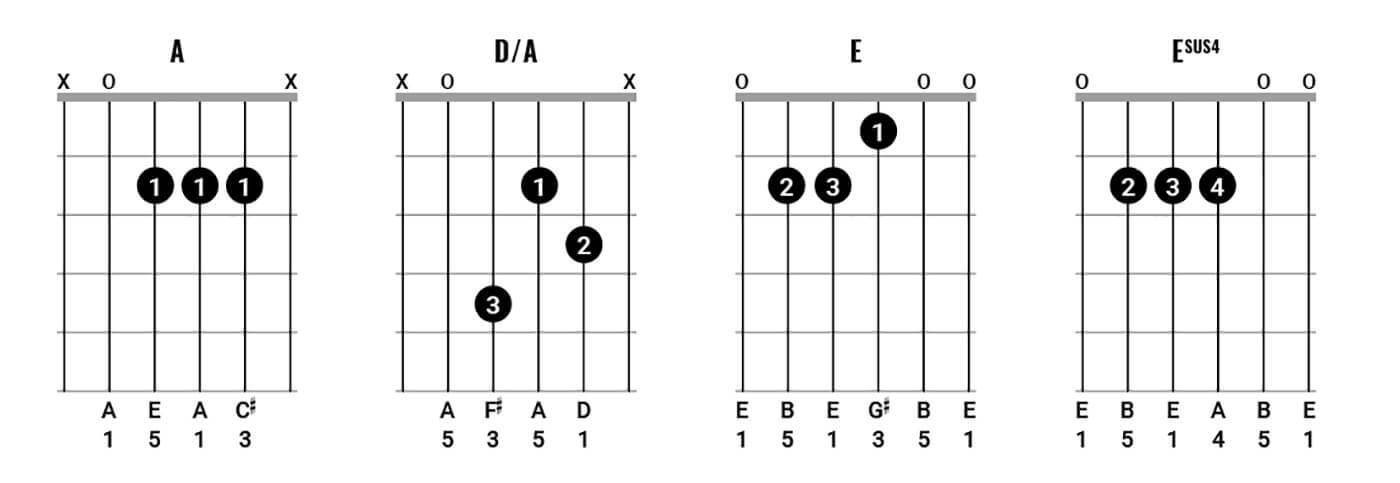
Essentially a chord of A followed by D – the fingers which make the D chord can be hammered on, and possibly pulled off as well. Try picking the open A in the bass first, and it will sound a little sweeter with a capo at the second fret. The pinky can also be hammered on to move between the E and E sus4 chords. Strum this one with your pick.
Figure 2
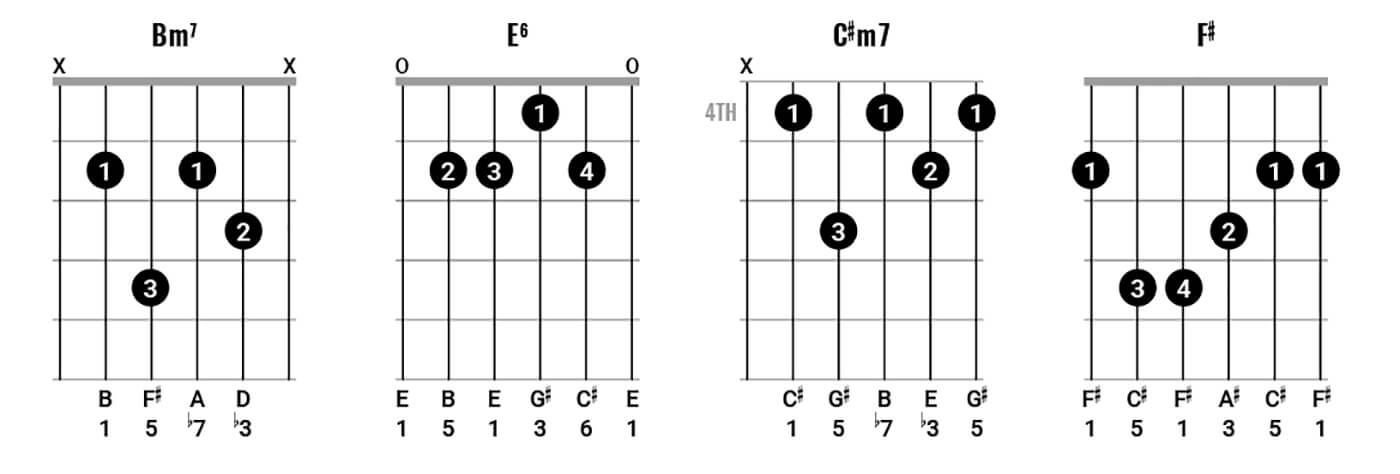
Even early in his career Simon often created chord sequences which go beyond the usual I, IV and V favoured by the folk musicians of the time. This example, using chords ii, V, iii and vi in A could work either as a four-bar sequence playing each chord in turn, or by alternating between the B minor seven and E chords before moving onto C♯ minor seven and F♯. Try adding D and A major chords at the end to bring the sequence to a satisfying conclusion.
Figure 3
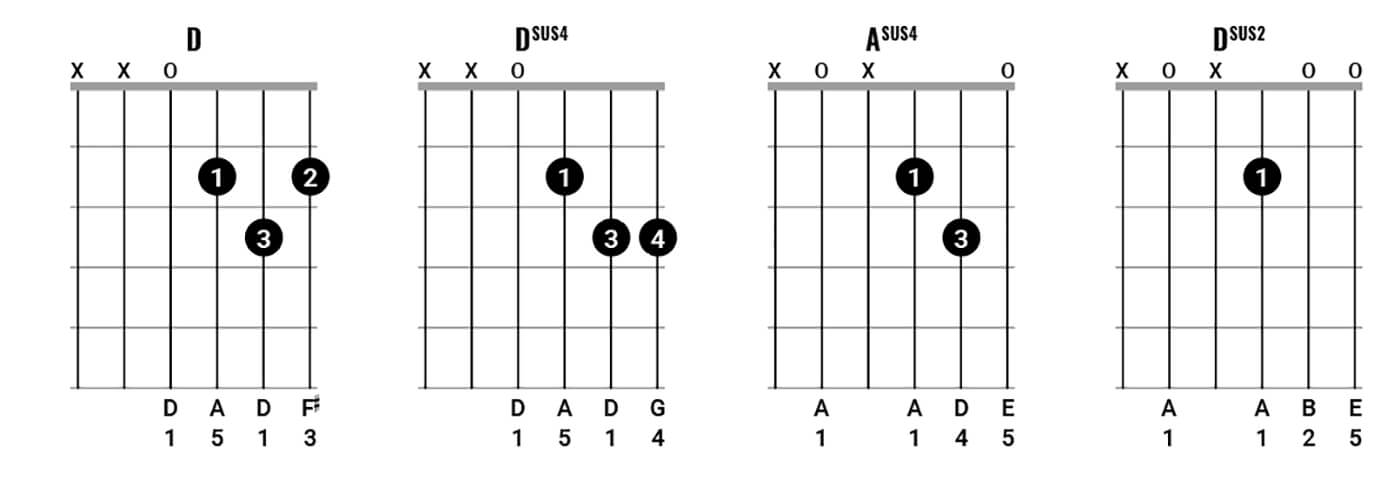
Simon might fingerpick an example like this, playing the two D chords by alternating between the D and G strings with his thumb while fitting in the top two notes with the index and middle fingers. For the A chords the thumb would alternate between the A and G strings. Try the A chord from figure 1 mixed in with these suspended chords.
Figure 4
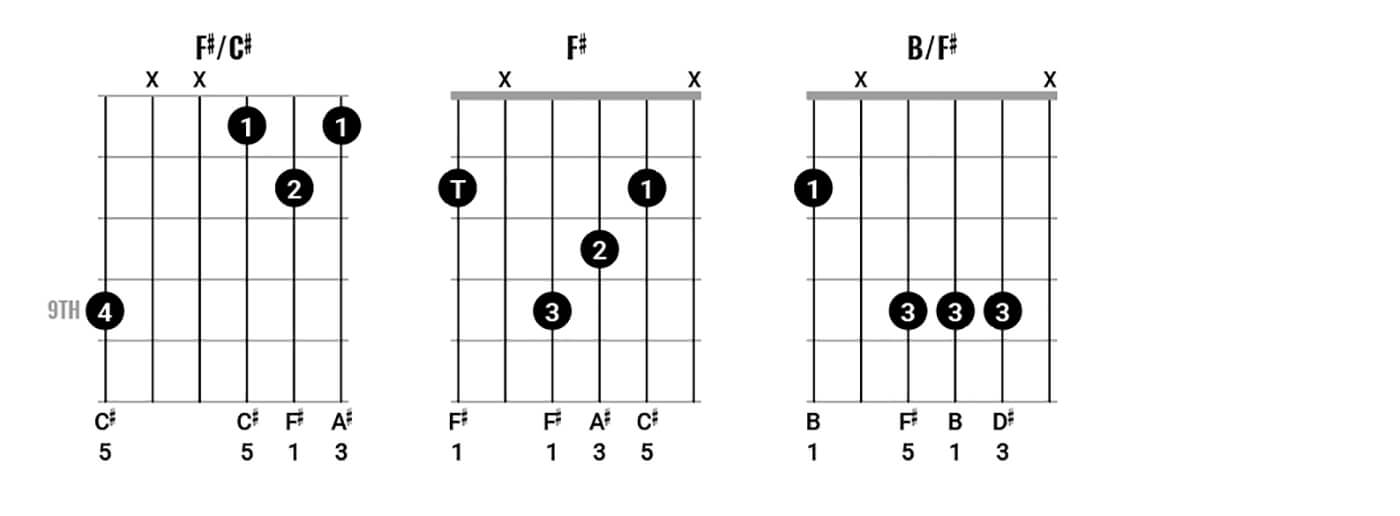
Simon doesn’t always use the dependable folk guitarist’s alternating thumb from figure 3. In an example like this, the low C sharp can be sounded repeatedly with the thumb on the beat in the style of a constant-bass blues. Meanwhile the upper notes are played as an arpeggio. The same idea continues after dropping down to the low F♯ and B/F♯ chords.
Figure 5
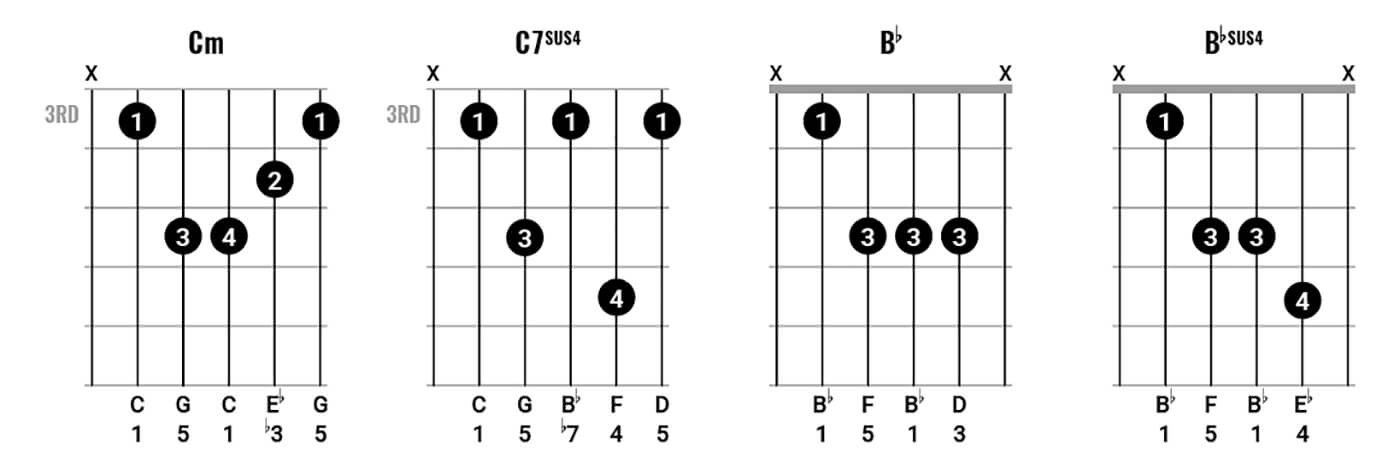
Barre chords have a richer sonority than open string chords and Simon makes frequent use of them. In this example strum with your pick and leave your second finger in place on the Cm7sus4 chord so that you can use the pinky as a hammer on/pull off. Do the same for the B♭ and B♭ sus4 as well.
More lessons from your favourite guitar players here.
